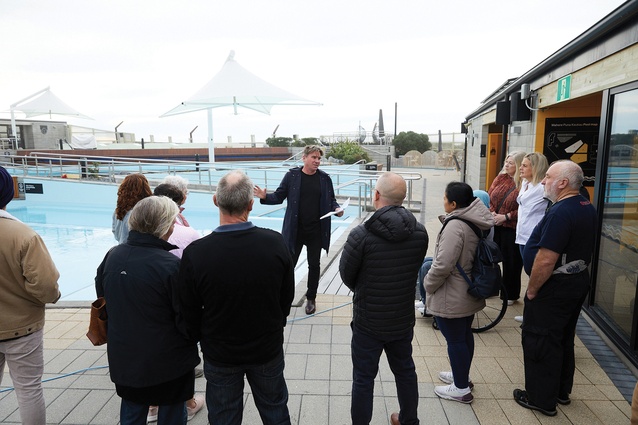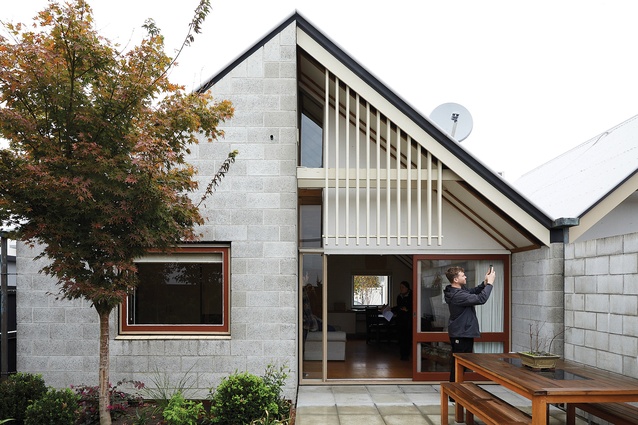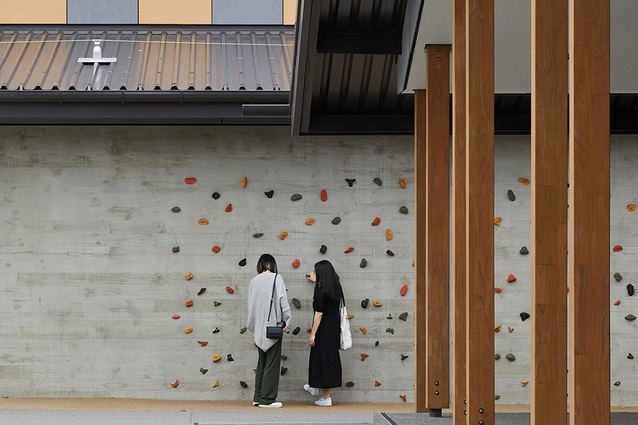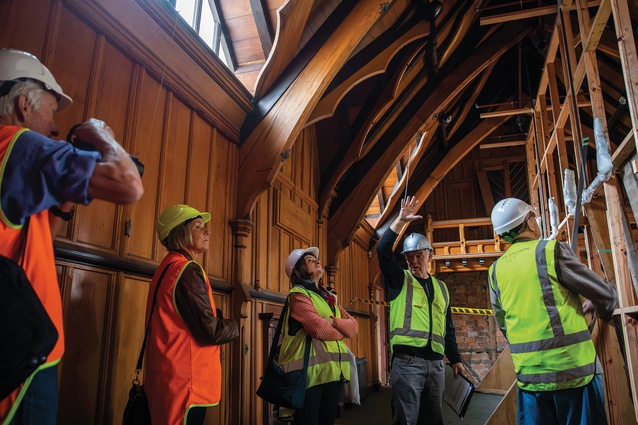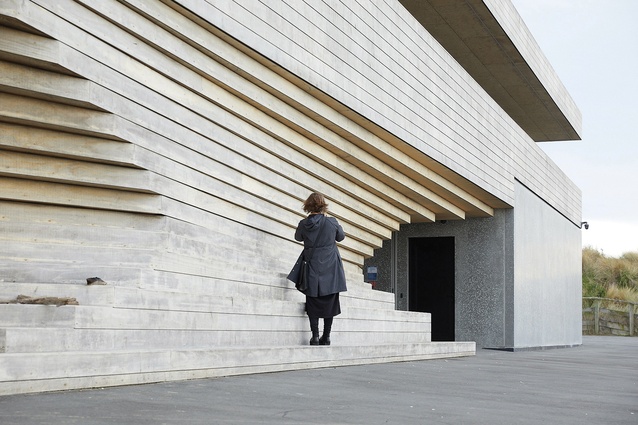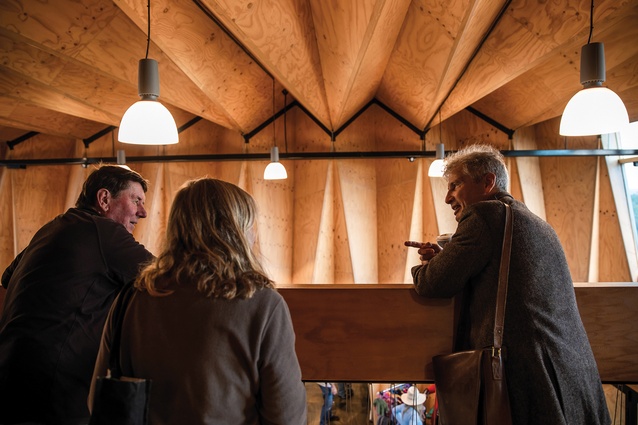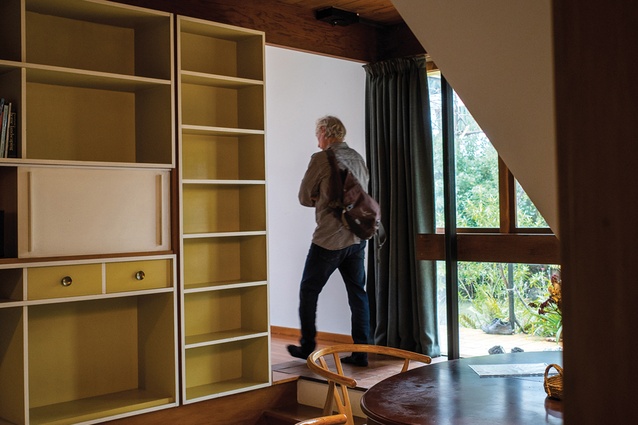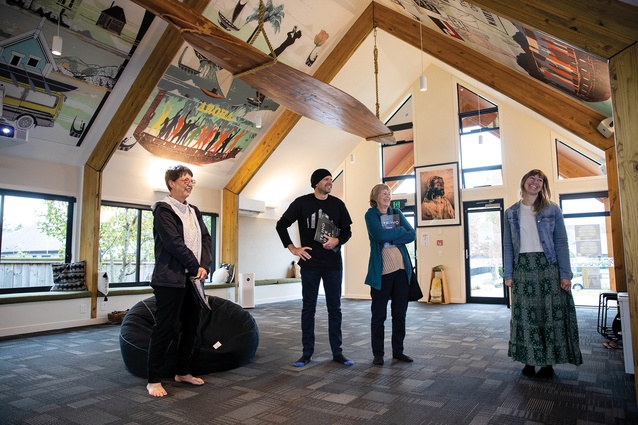Open Christchurch 2023
Open Christchurch returned stronger than ever to the streets of Ōtautahi on 6 and 7 May, showcasing an inspiring line-up of more than 50 works of architecture.
Now in its third year, the festival is pulling locals and visitors by the masses. While celebrating the legacy of Sir Miles Warren and Maurice Mahoney, the two-day event successfully shone a light on the evolving narrative of the city’s built identity — delving deeper than the typical focus of the well-recorded colonial, modernist and post-quake works, which John Walsh bluntly summarises as “… the works of white males, not all of them dead” in his 2020 book Christchurch Architecture: A Walking Guide.
The festival is orchestrated by the small-but-nimble team at Te Pūtahi Centre for Architecture and City Making on the ethos that “by making good design and architecture accessible and understandable, Open Christchurch encourages people to explore and debate the value of a well-designed environment”. It is deliberate in its inclusive approach, and most buildings are opened for free and supplemented by a range of tours and talks by passionate experts, all of whom volunteer their time to make the weekend happen.

A thought-provoking korero around Māori architecture and design, hosted within the landmark Te Puna Wānaka (Royal Associates Architects, 1994), opened the festival. A sold-out crowd had the privilege of hearing the panel discussion Te Reo o Mua, which included Perry Royal (Ngāi Tahu, Ngāti Raukawa), reflecting on the vision, struggles and racism encountered while creating the centre, a place for Ngāi Tahu and urban Māori to learn and live their language and culture in the central city. As described by Royal, the building bridges the traditions of Māori architecture and Ngāi Tahu stories with the postmodernism of the day. This approach has, in recent years, started to enter the mainstream for many of our new public buildings through co-design but here is a three-decade-old seminal example not widely discussed.
While Open Christchurch 2023 was undoubtedly still dominated in numbers by the old guard of Christchurch architecture, many of the most engaging places to open this year were those which displayed the city’s evolving cultural diversity and creation of new suburban landmarks. So many former landscapes were lost in the Canterbury earthquakes. Te Ora Hou Ōtautahi (Field Studio, 2022) and Fonua Mana (Bull O’Sullivan Architecture, 2022) both presented the skills of architects in working with low budgets to create architecturally and culturally rich community focal points. The doors of Te Aratai College (Architectus, 2022), Mount Pleasant Community Centre (Chris Moller Architecture + Urbanism, 2016) and He Puna Taimoana (AW Architects and Select Contracts, 2020) were similarly all opened, allowing public access to explore these new interventions.
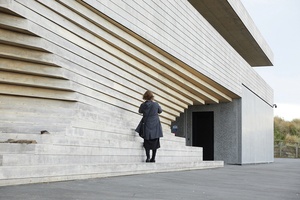
Broadening geographical access, this year’s festival also opened up a series of coastal buildings, including the recently completed New Brighton and South Brighton Surf Life Saving Clubs. While they are comparable facilities on the same stretch of beach, South by Southeast’s New Brighton building is a seductive architectural statement perching atop the dunes, with a singular voluminous upstairs club space. In contrast, 2km down the beach, Sheppard & Rout’s South Brighton build distils the club into a successful series of more intimate spaces, nestled between the dunes, sheltering from the easterly and, equally, creating a prominent landmark. This simultaneous opening of multiple buildings provided a fascinating opportunity to compare different design responses to the same context.
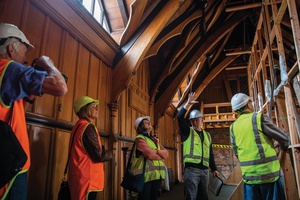
The architecture of Ōtautahi Christchurch is a living archive of the city’s colonial history, which was crudely edited by the Canterbury earthquakes, but Open Christchurch 23 carefully curated access to much of the city’s key surviving fabric. For the first time post-quake, public access was granted to the Canterbury Provincial Council Buildings (Mountfort, 1858–1865). Visitors donned high-vis vests and hard hats, and tours were guided by the likes of architectural historian Ian Lochhead and structural engineer Grant Wilkinson. Following extensive damage, the complex was protected and catalogued but, with an absence of funding, has sat silent behind fences and padlocks ever since. Through the architecture of the complex, Lochhead told the story of Canterbury’s colonial establishment of Christchurch, with each stage becoming more ambitious and more sophisticated while closely aligning with the latest in British architectural trends.
The Arts Centre Te Matatiki Toi Ora continued to feature prominently as part of the festival, supported by children’s and architectural tours. Ongoing restoration and rebuilding by Warren and Mahoney is breathing new life and purpose into the former education complex and, at the same time, adapting its Gothic Revival architecture to meet 21st-century needs. The Observatory Hotel has opened recently and was included as part of the festival; it is exemplary in its adaptation. Woven through the many levels of the former Physics and Biology Buildings (Mountford 1896, Collins and Harman 1917 and 1918), Warren and Mahoney has converted laboratories, lecture theatres and workshops into a boutique hotel.
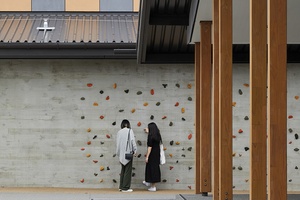
While no doubt fully ‘accessible’ from a compliance perspective, the many changes in floor level throughout the hotel certainly offer a challenge in practical terms for those with mobility restrictions and even for those with wheelie bags. As if Te Pūtahi had not taken on enough, this year’s festival also focused on accessibility. The accessibility features — or limitations of all buildings were listed within the programme and, for those particularly keen, an Accessibility Assessment Tour of the Christchurch Town Hall (Warren and Mahoney 1962–1972, 2019) was led by M Grace-Stent, questioning the concessions from accessibility in the name of heritage.
With the passing of Sir Miles Warren in 2022, it would have been amiss for the partnership of Sir Miles Warren and Maurice Mahoney not to have been celebrated within this year’s festival. Sir Miles’ office and residence (1962–1979) at 65 Cambridge Terrace is a building that I have the privilege of calling my office; it has now been open for a third year running and continues to be one of the most popular destinations. There is universal awe as first-time visitors enter the first-floor lounge and overlook the oasis-like backyard courtyard and it is always a pleasure to guide visitors through. For those quick enough to access tickets, three of the partnership’s residential projects were also open over the weekend, including the Schneideman House (1966), with its playful take on their archetypical 45-degree roof, and the pioneering Dorset Street Flats (1956–1957).
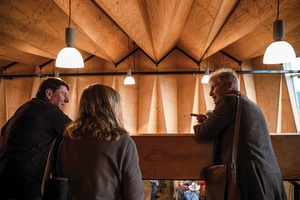
While the likes of Mountford, Warren and Mahoney were the ‘starchitects’ of their times and the “white males” referenced by Walsh, Open Christchurch 2023 invited a far richer discussion of Ōtautahi Christchurch’s architecture and its ability to impact human life. Festival Director Dr Jessica Halliday’s commitment to seeking out a diverse range of buildings is matched by her commitment to profiling the equally diverse range of experts behind these projects. In doing so, the festival not only celebrates exceptional buildings but also elevates those behind creating, caring for and adapting Ōtautahi’s architecture — not just the historic figureheads. Diversity is often given lip-service in corporate and professional settings but, here, Te Pūtahi is leading by example and we should all take note.
With an enticing array of architecture on offer, Open Christchurch’s only fault is that two days is simply insufficient to sample the breadth of places opening their doors. Fortunately, the now-annual festival is already confirmed for 3–5 May 2024. Put it in your calendar.


